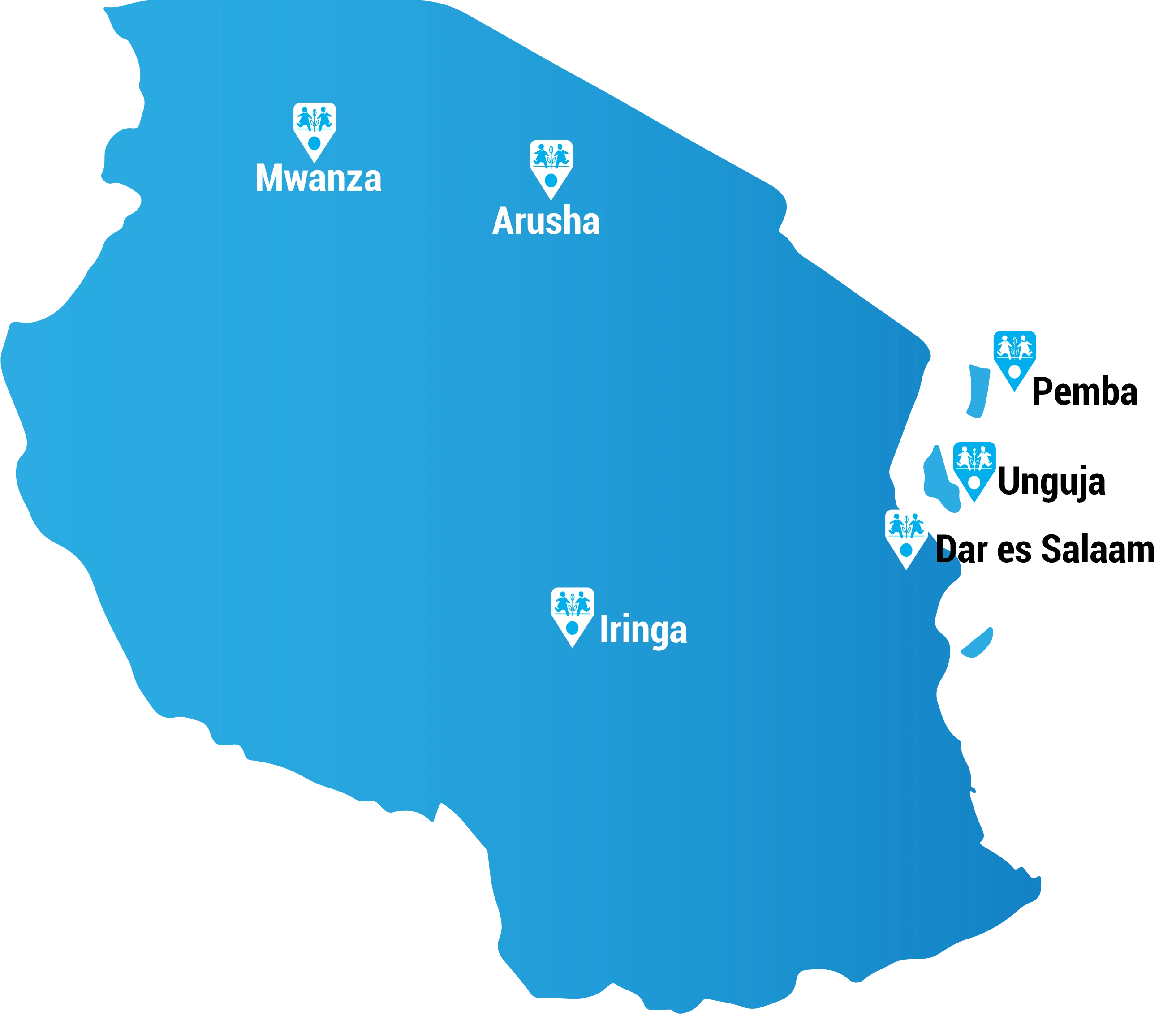
Where We Help

Where we Help
Arusha
The SOS Children’s Village in Arusha is situated at Ngaramtoni, in the outskirts of Arusha city along the road to the Namanga boarder. This was the second village to be opened in Tanzania in 2000, after that in Zanzibar. The village has 15 family houses, each with the capacity to accommodate 10 children and their mother, like the other village houses. There is also the Alternative Care Coordinator’s house, and accommodation for the aunts. Furthermore, there is a guesthouse, two youth facilities, for the boys and girls who are ready to join higher learning, such as college and other technical and vocational training centers. The village has 144 children and 42 young people.
Arusha Re-Innovation Program
This is the most recent program established by the organization. The overall goal of the program is that by 2026, Arusha to have risen as a center of excellence in childcare, protection, and youth empowerment. The re-innovation program accelerates the expansion to the range of Alternative Care to include innovative, Integrative Family-Based Care and traditional approaches relying on SOS 2030 strategy. The need assessment of the program indicated that SOS Children’s Villages, at its Arusha program location, had to undergo significant changes in the Alternative Care and Family Strengthening Programs (FSP). The change remains critical to help the program's quality and relevance in collaboration with the government, with the aim of reaching all Municipalities in the region of Arusha.
Dar es Salaam
SOS Children’s Village in Dar es Salaam was the third location to see an establishment of children’s villages after Zanzibar and Arusha. It was established in 2007 and is located along Sam Nujoma Road, close to the Ubungo traffic junction and the Mawasiliano Bus terminal. In Dar es Salaam is where the National Offices are located as well. The village comprises of 13 family houses, a village coordinator’s house, a house for the SOS aunts (SOS aunts take care of the children in the case of an SOS mother’s absence), a kindergarten, a greenhouse and a playground. There is a total of 147 children currently, with 20 other children already unified with their families of origin, but still enjoying full support from SOS. Most of the children are from Dar es Salaam, brought to the village with assistance from the government under the social welfare desk. The children attend the SOS kindergarten (located in the village). The primary school children attend the nearby primary school, same as the secondary school students as well who attend different government and private schools as well.
At the family houses, the children would consist of all age groups from young children to those entering the adolescence stage, but also, the youth who are ready or who have already joined higher learning institutions. Both the girls’ and the boys’ house are located within the village.
Mwanza
SOS Children’s Village in Mwanza is the most recent village to be established. It came after all the other children’s villages had been established. Mwanza is one of the biggest cities in Tanzania and it is in the lake Zone. SOS Villages in Mwanza has 12 Family houses, with the capacity of hosting 96 children at the ratio of eight children per family house. Currently, the village has 93 children. In each house, there lives a mother and aunt, who take care of the children. The children’s village in Mwanza was inaugurated in 2016, and it is located at Bugarika, Igelegele Street, in the Nyamagana District. At the SOS village in Mwanza, there also is a kindergarten, an administration block, and a Social Center for the young people, a special place for the program of youth empowerment and employment. Education program is another area, whereby, SOS Children’s Villages in Mwanza works closely with the government to improve the teaching and learning environment. Children attend government and private schools outside the village after graduating from SOS kindergarten. This gives them the opportunity to interact with other children in the community.
